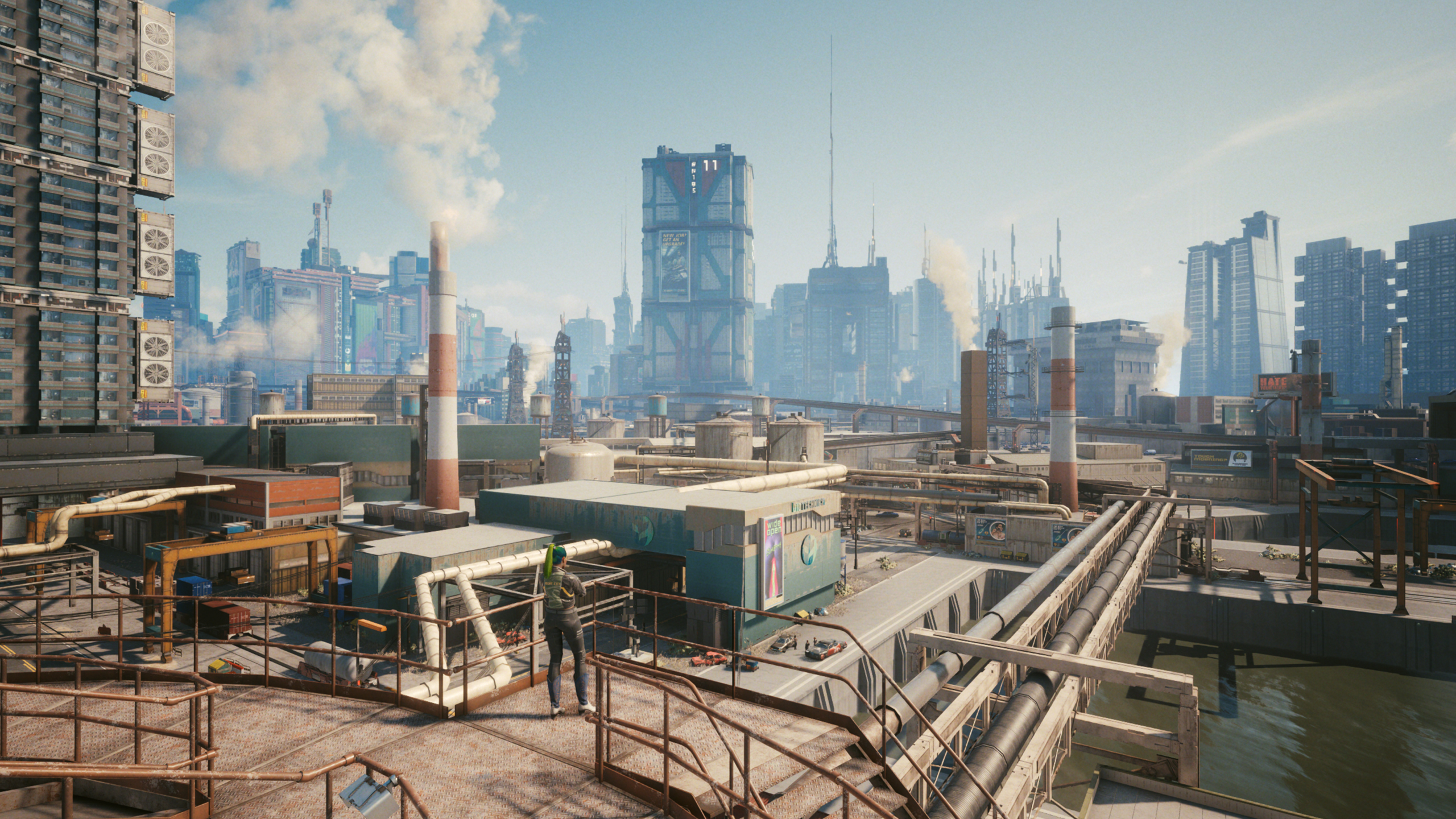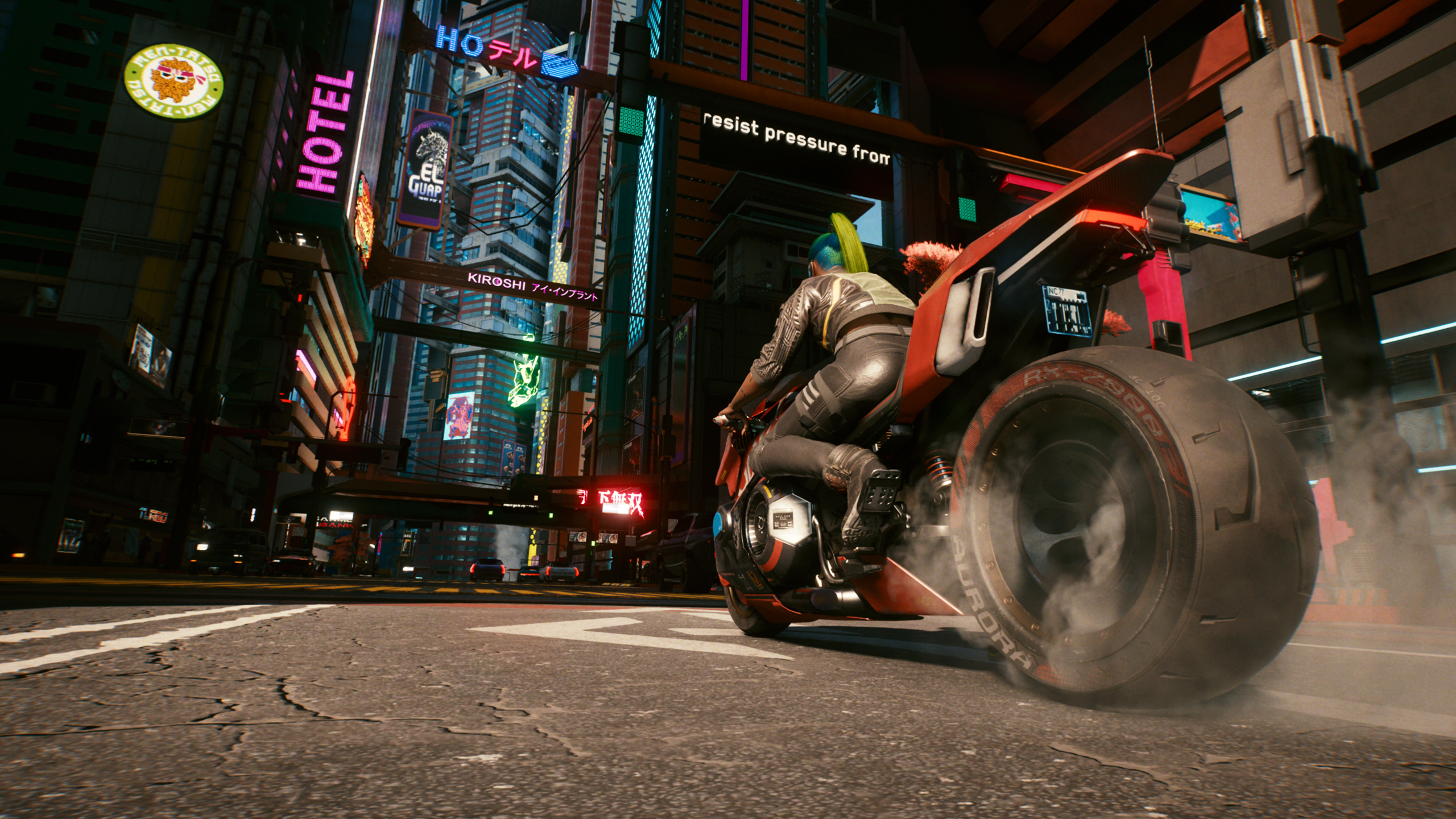The more time I spend in Cyberpunk 2077's world, the less I believe in it
Falling out of love with Night City.

I've gone on a strange journey with Cyberpunk 2077. After an initial period of being completely besotted with its setting, Night City, the illusion suddenly shattered. It dawned on me that, while this dystopian metropolis looks incredible from a distance—especially at night when it's awash with neon—peer a little closer and the seams begin to show. And now I can't shake the feeling that it's not a convincing place, but a shallow theme park.
There's a lot I love about Night City. In this video I highlight its incredible sense of scale and evocative atmosphere. And here I take a closer look at its varied, vibrant NPCs. But after 60+ hours here, using V's ocular implants to zoom in on the finer details, I've come to realise that, beyond the towering skyscrapers and immense urban sprawl, this is a world that feels curiously small. The scale and the level of detail just don't match up.

Play any open world game for long enough and you'll inevitably start noticing reused assets. An identical row of books in different apartments, offices with the same pinboard on the wall and the same memos stuck to it, graffiti repeated all over the city. It's a sacrifice developers have to make when building these massive worlds, because it would be far too time consuming and expensive to hand-craft every single object decorating every corner of the map.
Some games are good at hiding it, making artful use of their limited assets so you never really notice. But Cyberpunk 2077, surprisingly, is not. When you look around its environments—something the game encourages by giving you a cybernetic eye with several levels of zoom—you realise the world is made up of an unusually limited pool of objects. It's like a single house's worth of clutter spread across an entire city, and it's enormously distracting.
There are seemingly only about six books published in Night City, and everyone owns multiple copies of them, leaving them in piles around their homes. Any time you see sheets of paper on a desk or stuck to a wall, it's the same handful of nonsensical documents—including, oddly enough, a deed to buy a mango farm. I've seen this mango farm contract all over Night City, and every time I do—along with all the other recycled assets—it just feels smaller and smaller.

This will undoubtedly sound like tedious nitpicking to some readers. Who cares what's on a piece of paper lying on someone's desk? But the reason CD Projekt Red opted for a first-person view in Cyberpunk 2077, according to several interviews, was so players could get a closer, more intimate perspective on Night City. The developer wants you to look at the details in its world, which makes it baffling that there's rarely anything interesting to look at—just the same assets you've seen a hundred times already, repeated ad nauseum.
A good example of Cyberpunk's shortcomings when it comes to world-building is V's apartment. In Deus Ex: Human Revolution, we visit the apartment of protagonist Adam Jensen, and it's full of stories. It's not exactly subtle, but when you see the smashed mirror in the bathroom, you immediately know that Jensen is not entirely comfortable with the augmented body he's been given against his will. The clock parts strewn across his desk give an insight into how he spends his free time, while also hinting at some of the game's larger themes. There are some reused assets in this space, but many bespoke ones too.
Keep up to date with the most important stories and the best deals, as picked by the PC Gamer team.
And what about V's place? There are those same books you find in every other apartment you visit. A neon Kiroshi Optics sign that is absolutely everywhere including on the sides of buildings. A bunch of jackets hanging on a rack that, again, I've seen in other people's apartments. This probably isn't a big deal in the grand scheme of things, but wouldn't it be cool if V's apartment said something about them? Even a few objects related to the life path you chose decorating the place would add so much. As it stands, V's apartment is filled with the same generic junk as everyone else, which is kinda disappointing.
It's not just world clutter either. I love the chunky, retro-futuristic car designs in Cyberpunk 2077, but there aren't enough of them. Seeing the same handful of models repeated constantly on the road as I drive around the city really takes me out of it. And while the people on the streets are exciting to look at visually, they don't do anything. They walk back and forth, occasionally transitioning clumsily into an animation where they lean on a wall or light up a cigarette. They're like animatronic puppets, there not to exist in the world, but to make it look more alive than it actually is.
I've been replaying Red Dead Redemption 2, and while it's perhaps unfair to compare a game with a relatively small number of NPCs to a teeming metropolis like Night City, the denizens of Rockstar's Wild West feel like people. They move through the world in a natural, organic manner. They interact with each other, follow routines, and react to you in dynamic, interesting ways. It's all smoke and mirrors, of course, but the illusion is masterfully crafted and maintained. Hell, even the people in Shenmue's Yokosuka feel more real to me than anyone in Night City, and that game's over 20 years old now.
Scripted moments between NPCs exist in the game to break up the endless flow of silent pedestrians, but these are often repeated—in some cases, every time you visit certain locations. In the red light district, Jig Jig Street, I hear the same few lines of dialogue every time I walk through the gate leading into it. Walking out of V's apartment into the Watson district, I've heard a conversation between two cops at a noodle stand probably fifty times. This, and everything else I've mentioned, makes Night City feel artificial, unconvincing, and bizarrely limited in scope. Which is a wild thing to say about a city that looks like this.

Cyberpunk 2077 does a really good job of fooling you into thinking Night City is a much more complex and interesting world than it actually is. The lighting, shadows, and density of the architecture are stunning, no doubt. The first time you drive through the city at night and see the neon signs reflected in the rain-slick asphalt, it really grabs hold of you. Looking up at the looming skyscrapers, the camera's field of view widening to create a sense of vertigo, feels really impressive. But it's all superficial. A plywood cowboy movie set propped up by wooden planks that could topple over in a stiff breeze.
Even the advertisements for fictional products feel overused, and I'm sick to death of seeing that stupid All Foods guy, and the grinning Real Water dude, wherever I go. You could argue that this is exactly how you're supposed to feel in a garish hyper-capitalist dystopia, but I just find it annoying. Especially when the cartoonish, self-aware tone of these advertisements doesn't really marry with the darker edge everything else has. It's one of many jarring tonal inconsistencies that plague the game, but that's a whole other article.
I was in love with Cyberpunk 2077 for a good 30 hours. I was swayed by the thrill of playing a shiny, expensively produced new game, years in the making, in a genre I've long been a fan of. But over time, the half-baked world-building has really dampened the experience for me. I love some of the stories the game has told me—the long chain of sidequests involving a fleet of AI taxi cabs is especially good–but the people who inhabit this place are ultimately far more interesting than the city itself. When I first set foot in Night City, I saw a city. Now I just see a broken promise of one, with a very limited supply of reading material.
If it’s set in space, Andy will probably write about it. He loves sci-fi, adventure games, taking screenshots, Twin Peaks, weird sims, Alien: Isolation, and anything with a good story.


